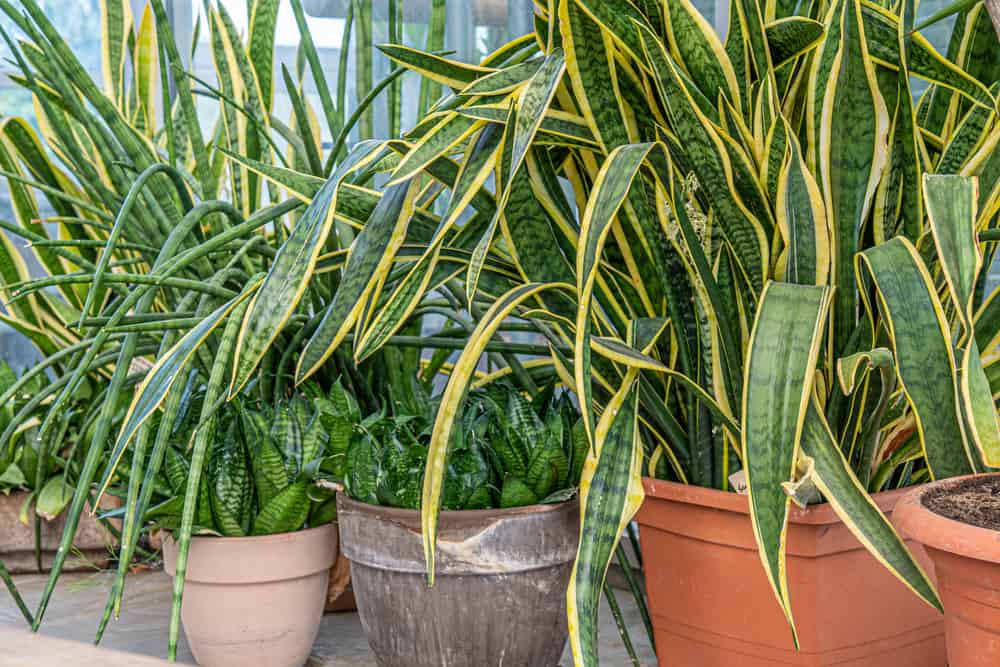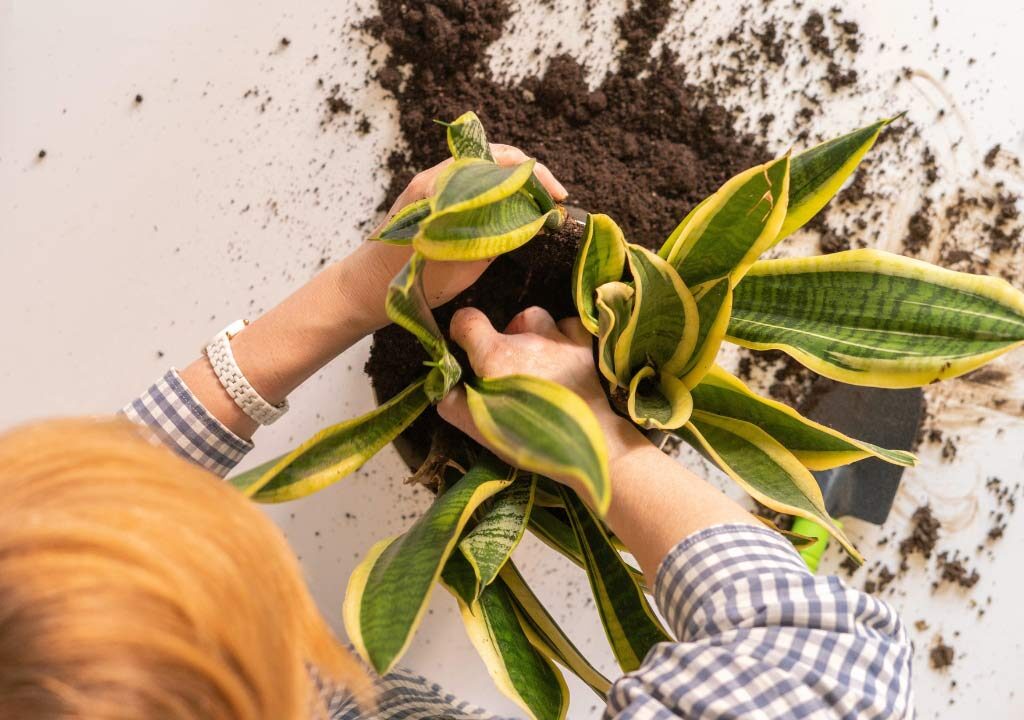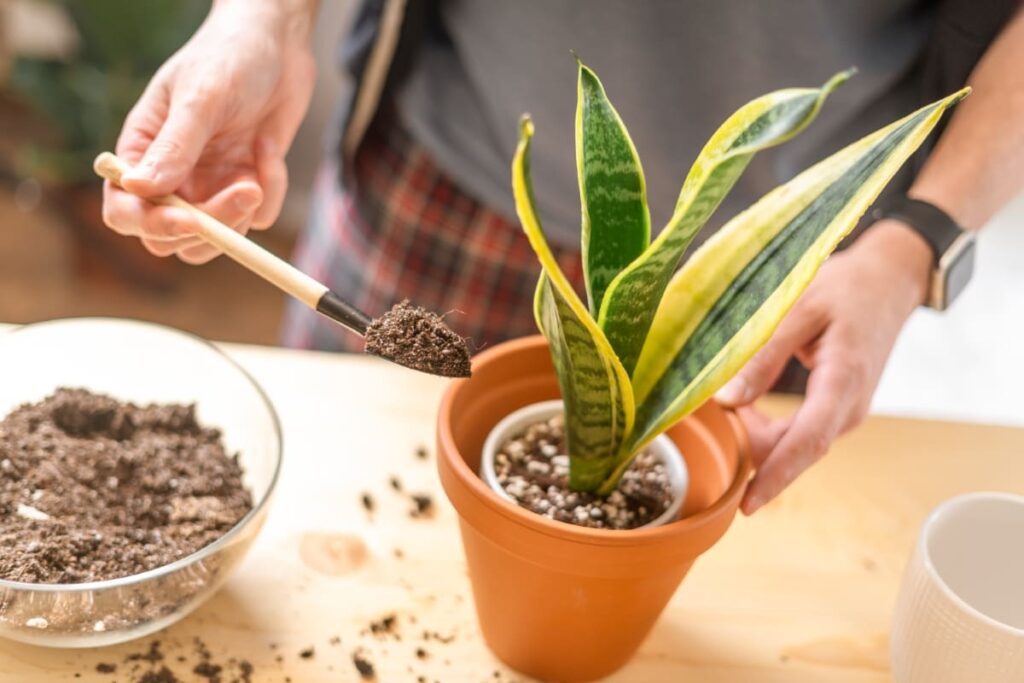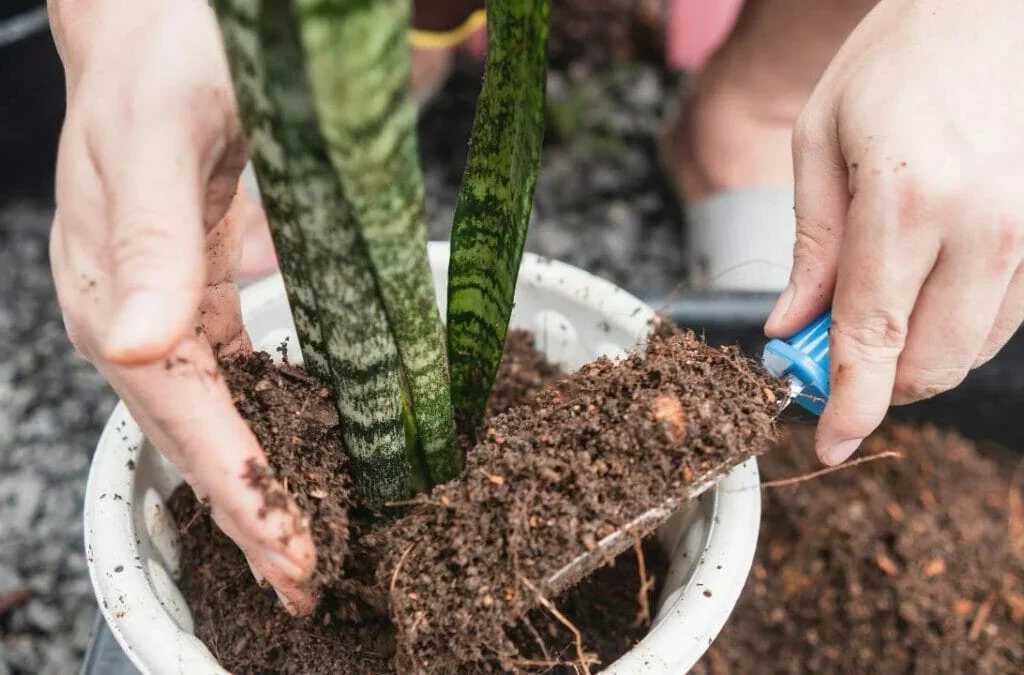Snake plants (Sansevieria trifasciata, also known as Dracaena trifasciata) have earned their place as one of the most popular houseplants worldwide, thanks to their air-purifying abilities, striking upright leaves, and remarkable tolerance for neglect. Yet, while they’re hardy and adaptable, providing the right soil mix is crucial for their long-term health, appearance, and growth.
If you’ve ever asked yourself, “What is the best soil mix for snake plants?”, this comprehensive guide will answer that question with detailed, science-backed insights on soil composition, drainage needs, and the ideal DIY soil recipes you can use at home.
Why Does Soil Type Matter for Snake Plants?

Although snake plants can survive in less-than-ideal conditions, poor soil can lead to problems like:
- Root rot from overly damp or compacted soil.
- Stunted growth in heavy, nutrient-deficient mixes.
- Poor aeration causing suffocated roots.
In nature, snake plants grow in rocky, sandy soils in tropical and arid regions. Mimicking these conditions indoors helps them thrive with minimal fuss.
Characteristics of the Ideal Snake Plant Soil
The best soil for snake plants must meet several important criteria:
1. Well-Draining
Snake plants are highly susceptible to root rot, a common problem caused by waterlogged soils. An ideal soil mix should allow water to drain quickly while retaining just enough moisture for the plant’s needs.
How to Achieve This:
Incorporate coarse materials like perlite, pumice, or coarse sand to enhance drainage and aeration.
2. Aerated and Loose

Snake plants dislike compacted, heavy soils. The roots need space to breathe and expand.
Solution:
Use light, porous ingredients such as coconut coir, orchid bark, or pine bark fines in your mix.
3. Nutrient-Rich but Balanced
While snake plants are not heavy feeders, a moderate amount of organic matter helps maintain healthy growth.
Good Additions:
Composted bark, worm castings, or coconut husk chips offer slow-release nutrients without retaining excessive moisture.
4. pH Range
Snake plants prefer a slightly acidic to neutral soil pH between 5.5 and 7.0.
Components of the Best Snake Plant Soil Mix

To create the perfect growing medium, you can either buy a commercial cactus or succulent mix or craft a custom blend using these components:
1. Potting Soil (Base)
Use a high-quality indoor potting mix as your base. Choose one without moisture-retaining additives like vermiculite or water crystals.
2. Coarse Sand
Improves soil texture and drainage. Avoid fine builder’s sand, which can compact.
3. Perlite or Pumice
Both are lightweight, porous materials that enhance aeration and drainage while preventing soil compaction.
Perlite: Lightweight, white, volcanic glass with excellent water-draining properties.
Pumice: More durable than perlite and equally efficient at preventing water retention.
4. Coconut Coir or Orchid Bark
Adds organic matter while keeping the mix light and breathable. Coconut coir is a sustainable alternative to peat moss.
5. Optional Additives
- Worm castings for gentle, organic nutrition.
- Charcoal to absorb impurities and excess moisture.
Best DIY Soil Mix Recipes for Snake Plants

Standard DIY Snake Plant Mix
- 2 parts potting soil
- 1 part perlite
- 1 part coarse sand
This simple blend ensures excellent drainage and aeration.
Premium DIY Snake Plant Mix (for Heavier Growers)
- 1 part potting soil
- 1 part perlite or pumice
- 1 part coarse sand
- ½ part coconut coir or orchid bark
- Handful of worm castings (optional)
This mix provides superb drainage, slight moisture retention, and gentle, organic nutrients.
Succulent and Cactus Mix Alternative
You can also use a high-quality succulent or cactus potting mix as a base and enhance it by adding extra perlite or coarse sand.
Ratio:
- 2 parts cactus mix
- 1 part perlite
- 1 part coarse sand
How to Pot Snake Plants in the Right Soil

Step 1: Choose a well-draining pot with a drainage hole at the bottom.
Step 2: Add a layer of small stones or pumice at the bottom for extra drainage.
Step 3: Fill the pot halfway with your chosen soil mix.
Step 4: Place the snake plant so its base is about an inch below the pot’s rim.
Step 5: Fill in around the roots with soil, pressing lightly to anchor the plant.
Step 6: Water sparingly, allowing excess water to drain.
Common Soil Problems for Snake Plants 1. Water-Retaining Soils
Soils with high peat content or moisture-retaining crystals hold too much water, increasing root rot risk.
Fix:
Repot the plant in a fast-draining mix with added perlite or sand.
2. Compacted or Dense Soil
Heavy, compacted soils limit air circulation around the roots.
Fix:
Loosen the soil with perlite, pumice, or bark chips.
3. Depleted Nutrient Levels
Old or poor-quality soil loses nutrients over time, stunting growth.
Fix:
Repot every 2–3 years or refresh the topsoil annually with fresh mix and a handful of organic compost or worm castings.
Frequently Asked Questions
Can Snake Plants Grow in Regular Potting Soil?
Yes, but regular potting soil alone tends to retain too much moisture. Always amend it with drainage-enhancing materials like perlite or sand.
How Often Should I Change the Soil?
Repot your snake plant every 2–3 years, or sooner if the soil becomes compacted, waterlogged, or depleted of nutrients.
Do Snake Plants Need Fertilizer in Their Soil?
Snake plants are light feeders. A balanced, diluted fertilizer during the growing season (spring and summer) works well. Avoid over-fertilizing, which can harm the roots.
Quick Reference: Best Soil Mix Ingredients for Snake Plants
| Ingredient | Purpose |
|---|---|
| Potting Soil | Base medium for root support |
| Perlite/Pumice | Enhances drainage and aeration |
| Coarse Sand | Improves soil texture and drainage |
| Coconut Coir/Bark | Adds organic matter and structure |
| Worm Castings | Provides gentle, organic nutrients |
Conclusion
The best soil mix for snake plants balances excellent drainage, good aeration, and moderate organic matter. Whether you opt for a simple DIY blend or customize a cactus mix, ensuring the right texture and drainage will keep your snake plant healthy, vibrant, and thriving for years to come.
While snake plants may tolerate various conditions, giving them soil that mimics their native environment — sandy, loose, and well-drained — makes a significant difference in their longevity and beauty. Combine that with proper watering and light care, and you’ll have one of the most resilient and rewarding houseplants in your collection.





